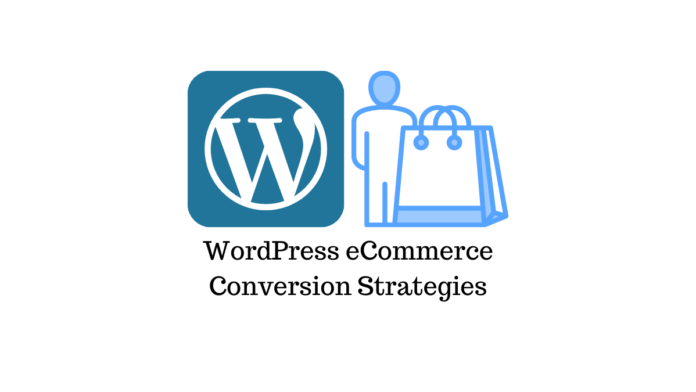Websites are more than just online shops. The site for your business is more than just a window for customers to look at. Your website is the perfect place to showcase your product, invite customers, retain them, and most importantly, increase your sales.
In today’s age where things are mostly done through the internet, making your online image grow is equally important as propelling your sales upward. But sales don’t come in just a click of a button. If anything, there’s an entire adventure behind each sale that you make.
What Is A Buyer’s Journey?
Buyer’s journey is the perceived, intangible journey buyers take before arriving at the destination of purchasing a product. Different customers have different paths in considering which products to buy despite having the same product in mind. This is often referred to as the buyer’s persona, which is another important component of every business.


The buyer’s journey consists of the three stages:
Awareness Stage
This is the point at which the customer becomes largely aware of a need for a service or a product, which leads to their search. Searching could be done entirely online through search engines or could be supplemented by asking an acquaintance. Customers who are preparing for a friend’s birthday will consider their friend’s tastes, as well as their budget and other related factors. The customer then searches for gift ideas that fit within their friend’s preferences and their means.
Consideration Stage
This is the stage where your product knowledge and your ability to level with every customer is needed. In terms of the market, you’re not the only one selling the same product or service. Your competitors have their ways of generating sales. Being smart on how to showcase your product without being too complicated and hitting your customer’s pain points is a decisive factor when it comes to being considered.
Decision Stage
This is the last stage in the buyer’s journey. This is when the customer compares and contrasts all the options filtered out from the consideration stage. It’s another reason why your business needs to leave a long-lasting impact on your customers. Being considered doesn’t mean a sale is generated, so you haven’t won the battle yet. You need to do something to set your products out from all of your competitors.
Although similar stages can be observed through every consumer, the reality of their buyer’s journey differs from one another. Being able to incorporate the buyer’s journey to your website is but the first step in having a productive and effective customer interaction.
How Can Buyer’s Journey Help Your Website?
Despite the rising glory and obvious power of the internet, as a business owner, you still don’t know who your customers are. You don’t know their exact pain points. You’re unaware of their friends’ birthdates. Simply, there’s no way to know their exact buyer’s journey.
Be as it may, what the buyer’s journey does is to not serve as a directive on how you’ll sell your products. You can use it in crafting an effective marketing strategy.
Nowadays, outbound marketing or directly reaching out to customers is an outdated practice. Businesses should no longer sell their products at their customers’ faces, hence the rise of inbound marketing. This type of marketing is more customer-centric in the sense that instead of selling, companies are helping their customers attend to their needs.
This is exactly why the buyer’s journey—in relation to the inability of knowing each of your customers—is significant. Your ultimate goal might be to increase sales, but doing it takes more than just simply selling.
Detailed planning is requisite in order to design a website that aims to cater to your customers’ needs. You’ll have to create a visual representation of each design stage in creating your website, commonly known as a site map. The buyer’s journey can then be incorporated into your site map to make your website more customer-centric.
There’s an option for business owners like you to get a web design team to create custom-design websites, or you can make use of template designs such as those in WordPress.
Having A High-Converting WordPress Ecommerce Site
Suppose you’re planning to use WordPress for your business. To further elaborate on how to use buyer’s journey and other key components in designing your website, here are four essential components of a high-converting WordPress ecommerce site:
1. Emphasizing Your Brand
Integrating the buyer’s journey to your website may lead you to think about capitalizing on the awareness stage since this is where your customers search for your business. However, you’re forgetting one crucial thing: your customers don’t know you exist.


This is why promoting your brand by maintaining a good image, creating a unique brand legacy, and the like are important. While it’s true that the first stage in the buyer’s journey is awareness, your business doesn’t start off with customers being aware.
You need to have a good and pleasing brand, and you must let that show on your website. How your brand is being reflected on your WordPress also shows how your site can reflect your business. This means there’s a two-way relationship happening between the site and your business.
Your website can outwardly be expressed by using the same color palette as your brand, as well as the reflection of your business’s values in your web pages. If your brand advocates for sustainability, for example, then showing your sincerity in supporting this cause must be shown on your website.
In addition, your brand reputation must also be considered. Being an eco-friendly business (or any cause for that matter) must also be acted in a certain way. You can utilize sustainable packaging or publish reports as per the Corporate Social Responsibility (CSR) model to let your customers know that your eco-friendliness isn’t just for show.
2. Making Your Site SEO-Friendly
In the awareness stage, you now know that customers make use of search engines to get a grasp of their available options. This is why incorporating the best search engine optimization (SEO) practices is crucial.
Search engines use ‘crawlers’ to locate your web pages and catalog them in an index to make searching faster and more effective. Not all websites on the entire web are being cataloged, let alone be prioritized in the search results of these engines.
Increasing your SEO rank means being shown in the first few pages of the search results, thereby increasing the likelihood of being visited by a customer. After all, a good-looking website won’t matter if it only has one in a hundred chances of being visited.
Moreover, optimizing your site’s loading speed is crucial. Your website must be able to load in just a matter of seconds for your customers to stay on your webpage. This also means displaying all the relevant information on your webpage that’ll pique their interest.
In the awareness and consideration stage, taking advantage of your site’s SEO-friendliness means more visibility and more chances of being shortlisted. With this, making your site’s search bar stand out means easier navigation around your site.
Unclogging your site from bloat codes and clutter can help declutter it, as well as increase its loading speed. Optimizing your site’s looks and speed both in desktop and mobile versions can also up the likelihood of traffic being converted to sales.
3. Having An Effective And Kind Customer Service
There’s no foolproof and flawless way to run a business. Problems and issues will always come up, but having measures set up beforehand can help mitigate the potential harm. On the customer’s side, however, this means getting the right help exactly when they need it.
As opposed to popular belief, customers aren’t always right. There’ll be customers who are beyond reason, but it isn’t valid to berate them for it. Having effective and kind customer service means processing the problem with them, and not for them.
Incorporating this mindset in your site means having a live person always ready to speak with your customers. Be it a product-related issue or a browsing issue, the spontaneity of a human touch exceeds the knee-jerk responses of bots or a frequently asked questions (FAQs) page.
Furthermore, you’re fully aware that the buyer’s journey differs from one customer to another. This implies that their questions are nuanced and can’t be captured in a canned response from a bot or a question on your FAQs page.
You can integrate a live chat option in your site or other plugins to show that there’s a human behind the scenes. Take a look at this list for the best live chat plugins for your site.
4. Being Smart
In consideration of the buyer’s journey, people have different reasons behind each purchase. Provoking their need to buy the product goes beyond putting ‘buy me’ or ‘add to cart.’ After all, the need for these buttons will only show up when the customer decides to buy something.
So, being smart about which products to feature and how to display them on your site can spark interest in them. For instance, people who need jeans have most likely run out of jeans to wear, or there’s a special need for them like parties or an event.
Being able to display these needs on the site could tickle their decision to buy. You can use photographs of people wearing the jeans in different settings instead of simply showing the product itself. You can also take it a notch higher by having models of different body sizes to make it more personal for them.
Moreover, being smart about your site means being proactive and flexible. Your site’s look won’t remain as it was the first day you launched it. Just like your business and the market, it’ll undergo changes. Proactively extracting data from your traffic and sales can you give more insight on how to overhaul your website to make it more user-friendly and navigable.
Conclusion
Your website is a vital component of your business. How well you manage and run your business must be reflected in the same fashion as how you run your website. This kind of consistency will help breed trust among your customers—something that you want them to have and feel when interacting with your company.











